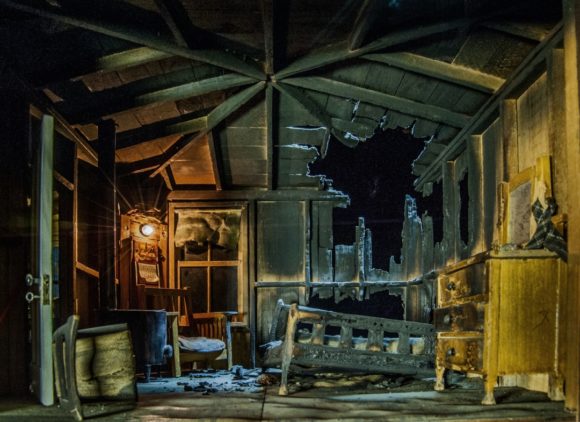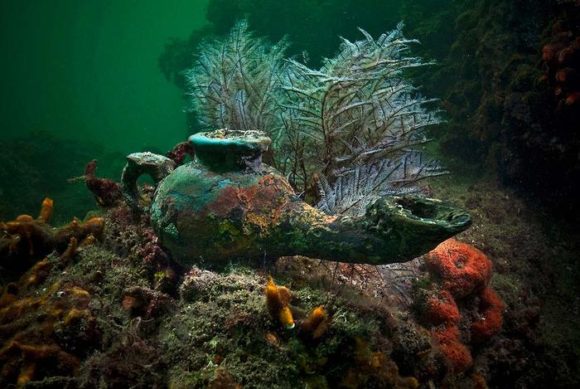1940s Crime Dioramas. You Know You Love These.
All Hallow’s Eve is nearly upon us.

Frances Glessner Lee, “Burned Cabin” (detail) (1944-48) (Collection of the Harvard Medical School, Harvard University, courtesy Office of the Chief Medical Examiner, Baltimore)

Frances Glessner Lee, “Dark Bathroom” (detail) (1944-48) (Collection of the Harvard Medical School, Harvard University, courtesy Office of the Chief Medical Examiner, Baltimore)
From Hyperallergic,
The Smithsonian Conserves Blood Pools and Charred Skeletons from 1940s Crime Dioramas
by Allison Meier
For the first time all 19 surviving Nutshell Studies of Unexplained Death are going on public view, with an exhibition opening in October at the Smithsonian’s Renwick Gallery.
When reached by phone, Ariel O’Connor, objects conservator at the Smithsonian American Art Museum, was in Baltimore’s Office of the Chief Medical Examiner studying 18 intricate crime scenes. Each was made in the 1940s and ’50s by Frances Glessner Lee for Harvard’s Department of Legal Medicine to show a death in miniature, with details carefully crafted down to the working door locks and painted blood spatters. One has a body sprawled on the street outside an illuminated storefront stocked with magazines, comic books, wrapped lollipops, potato chips, bottles, and other wares, all handmade to scale. “I’m looking at the sidewalk and there are tiny cigarettes, three millimeters long, that she rolled by hand,” O’Connor told Hyperallergic. “Her level of detail just astounds me daily.”
or the first time, all 19 of Lee’s surviving dioramas will be on public view in Murder Is Her Hobby: Frances Glessner Lee and the Nutshell Studies of Unexplained Death. The 18 Nutshell Studies still in use for criminologist training at Baltimore’s Medical Examiner’s Office are joined by a 19th “lost” study found in the attic of her New Hampshire estate in the 1990s. O’Connor is working on stabilizing, cleaning, and conserving the delicate models before the exhibition, organized by curator Nora Atkinson, opens on October 20 at the Renwick Gallery of the Smithsonian American Art Museum in Washington, DC.
Lee was not allowed by her wealthy Chicago family to go to university, and it was only later in life that she was free to pursue her interest in forensics. Now recognized as the “mother of forensic science,” Lee used her inheritance to endow the first program for studying forensics at Harvard University, and in 1943, she was named State Police Captain of New Hampshire for her service. A rare woman in a male-dominated field, she also used what were perceived as traditionally feminine crafts — stitching, knitting, and doll houses — to improve the field of homicide investigation…”
For the rest (more pictures!!!!), click here.
Share


